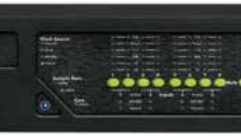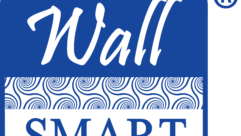Peavey Takes CobraNet to the Wall
Peavey introduced the new MediaMatrix nWall 2.0, a surface-mounted audio interface panel that converts audio from analog to a digital stream that can be routed via CobraNet right at the panel.
Peavey introduced the new MediaMatrix nWall 2.0, a surface-mounted audio interface panel that converts audio from analog to a digital stream that can be routed via CobraNet right at the panel.
The nWall 2.0 offers high-quality analog-to-digital audio conversion and transport for the MediaMatrix audio networking system. By converting two balanced XLR inputs and two 1/8-inch inputs into a digital audio stream at the panel, the nWall 2.0 reduces buzz, hum, ground loops, and other cable issues, eliminates the need for isolation and impedance matching interfaces, and replaces long analog cable runs with a single Cat-5e UTP cable, company officials said.
“The nWall 2.0 is an extension of the growing line of MediaMatrix products designed to put entire solutions at the fingertips of the designer and contractor,” said Hartley Peavey, founder and CEO of Peavey Electronics Corp., in a statement “MediaMatrix continues to expand to include an entire range of control products, all designed to allow the integrator to design, create and deploy complete systems without the additional expense and complexity of third-party control systems.”
The nWall 2.0 interface panel fits in a standard two-gang NEMA back box, and is powered over the attached network cable from a network PoE-capable network switch that conforms to IEEE 802.3af. The XLR connectors can be configured for multiple audio input sensitivities from -56, -26 to +4dBu, selected from a rotary switch located on the unit’s front panel. The XLR inputs support electret condenser and dynamic microphones plus line-level audio with 15V DC phantom power. The 1/8-inch TRS mini jacks accept a nominal -8dBU signal that is summed to mono and mixed with the XLR inputs.
Any number of nWall panels can be patched to any number of MediaMatrix Nion processing nodes on the fly, eliminating the need for expensive patch panels and reducing setup time between events, according to the company.









